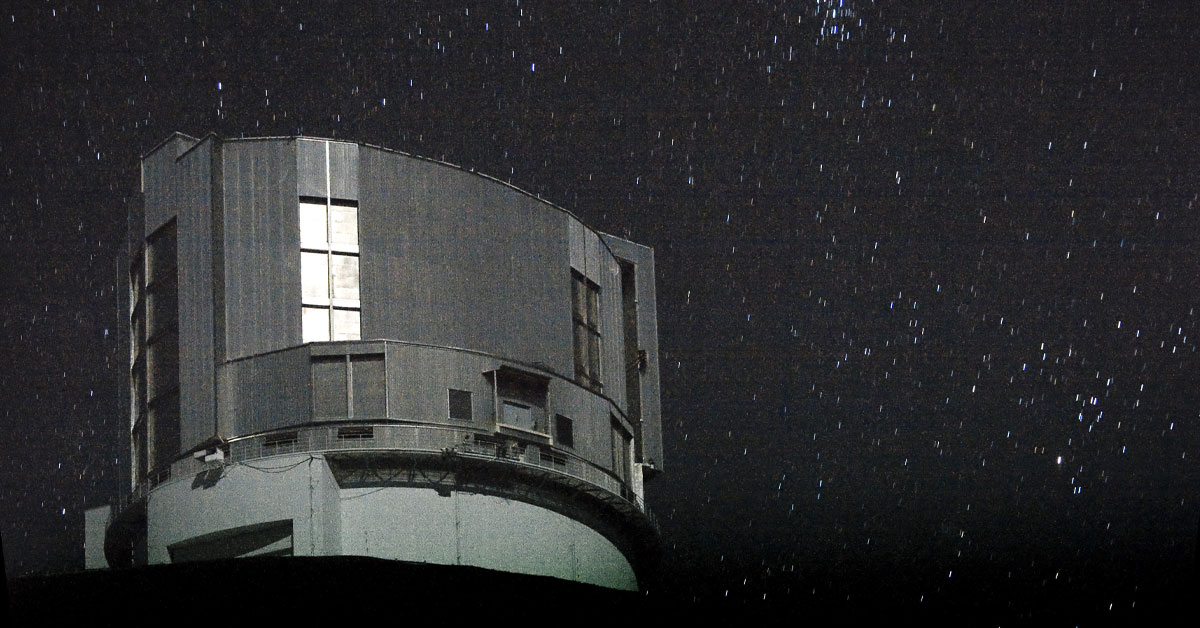News
Expanse Supercomputer Used to Analyze Unprecedented Number of Stars in Other Galaxies
Published April 29, 2025
By Kimberly Mann Bruch

U.S. NSF ACCESS allocations on Expanse at the San Diego Supercomputer will be used to better understand images collected by the new Prime Focus Spectrograph on the Subaru Telescope in Hawaii. Credit: Subaru/National Astronomical Observatory of Japan
A team of international scientists has embarked on a massive project to map the chemical history of our Milky Way galaxy and its neighbors using a a powerful new instrument called the Prime Focus Spectrograph (PFS). This cutting-edge technology, now operational on the eight-meter Subaru Telescope in Hawaii, promises to unlock unprecedented details about how galaxies form and evolve. To process the vast amount of new data, astrophysicists will utilize U.S. National Science Foundation (NSF) allocations on the Expanse system at the San Diego Supercomputer Center – part of the School of Computing, Information and Data Sciences.
“Imagine trying to understand the history of a city by analyzing the materials that make up its buildings – that’s essentially what we are aiming to do with galaxies,” explained Roman Gerasimov, a UC San Diego alum and postdoctoral astrophysics researcher at the University of Notre Dame. “We will work with over 100 scientists and engineers – then use Expanse to carefully measure the ‘chemical fingerprints’ of over 100,000 stars and piece together the story of how these stellar populations were born, moved and interacted over billions of years.”
The PFS is a brand new instrument within the Subaru telescope, which is operated by the National Astronomical Observatory of Japan (NAOJ). The PFS was built and commissioned by an international collaboration, led by NAOJ, and was designed specifically for this kind of large-scale survey. The PFS will allow researchers like Gerasimov and Evan Kirby, an associate professor of physics and astronomy at Notre Dame and co-chair of a PFS galactic archaeology survey, to collect data on an astonishing number of stars and then conduct data analysis using SDSC’s Expanse system.
“In the initial six-year survey, this massive dataset of over 100,000 stars will provide an unprecedented level of detail about the composition of our galactic neighborhood,” Kirby said.
So, what exactly will this cosmic mapping project reveal? Gerasimov and Kirby agreed that scientists around the world are eager to tackle some fundamental questions about the universe:
- Tracing Our Galactic Ancestry: By analyzing the chemical makeup of stars in the Milky Way, researchers hope to reconstruct the galaxy's formation history. They'll be looking for clues about how smaller galaxies may have merged over time to build the large spiral we call home.
- Understanding Spiral Galaxies: Scientists will observe two nearby large spiral galaxies similar to the Milky Way: Andromeda and Triangulum. One of the goals is to determine if their chemical fingerprints are similar to that of the Milky Way, or if our galaxy is unique. While researchers understand the chemistry of the Milky Way relatively well from previous surveys, the PFS will provide a similar insight into other galaxies.
- Understanding Dwarf Galaxies: Unlike the Milky Way, Andromeda or Triangulum, dwarf galaxies are much smaller and look like blobs of light in the sky. They are important because they are much simpler to analyze and because large galaxies "grow" by absorbing these dwarf galaxies over time.
- Mapping the Distribution of Elements: The study of the origin of elements will be predominantly carried out in dwarf galaxies since they have simpler histories and structures than those of large galaxies like the Milky Way. That is, the archaeological record is less scrambled.
- Connecting Chemical Makeup to Stellar Properties: Scientists will correlate the chemical data with other properties of the stars, such as their age and motion. This will help them understand how a star's composition influences its life cycle and its place within the galaxy.
“Our project involves a large international collaboration and requires significant computational resources like Expanse to analyze the massive amounts of data that will be collected,” Kirby said. “After 15 years, the survey is collecting data, and it looks gorgeous. After just a week of observing, PFS made a portion of my career's work obsolete, and I couldn't be happier about it.”
Ultimately, this detailed chemical mapping of our galactic neighborhood promises to revolutionize our understanding of how galaxies form, evolve and interact. By using this powerful new “eye on the sky”, astrophysicists are poised to uncover the hidden history written in the stars – providing a richer and more complete picture of our place in the vast universe.
“Thanks to allocations from NSF on Expanse, the results from this survey will undoubtedly fuel new discoveries and inspire future generations of astronomers,” Gerasimov said.
Computational resource support for Gerasimov and Kirby is provided by NSF ACCESS (allocation no. PHY250061). Work for the survey at Princeton University, Johns Hopkins University and California Institute of Technology is supported in part by the NSF (grant no. 1636426). Additional funding is provided by an array of world-wide organizations.

